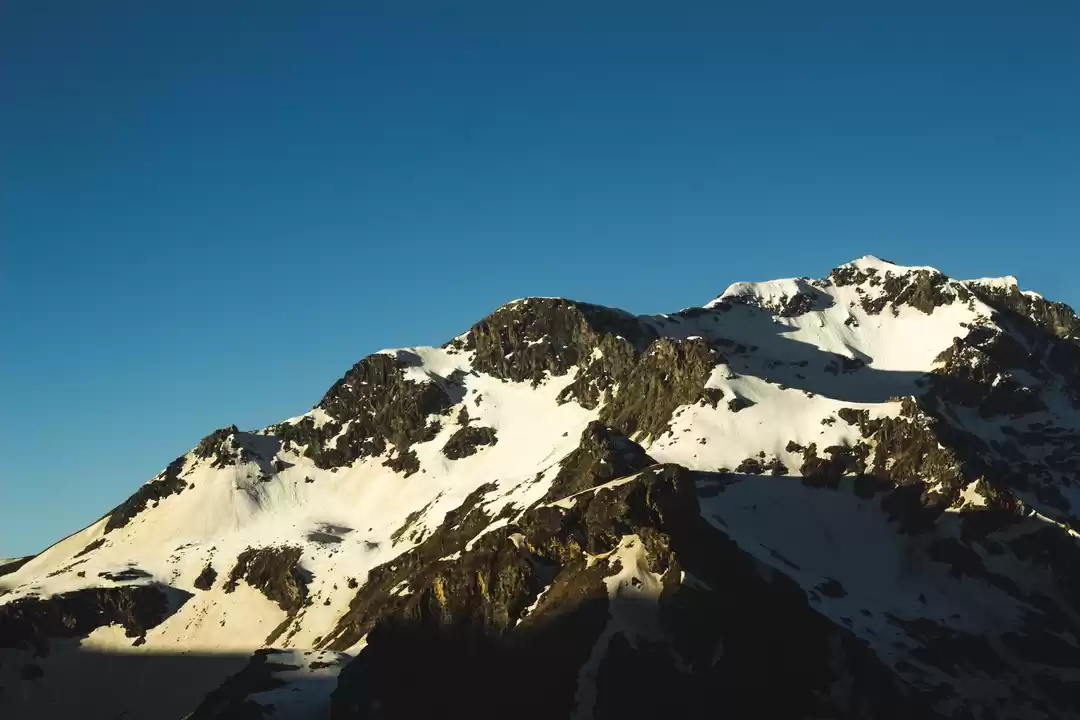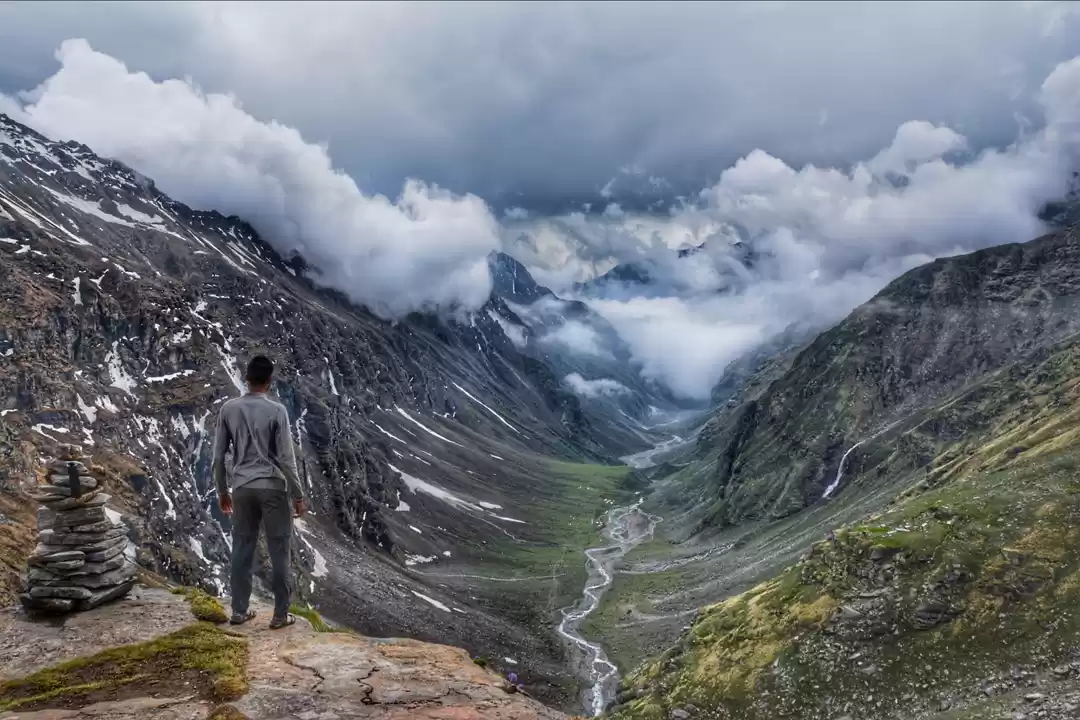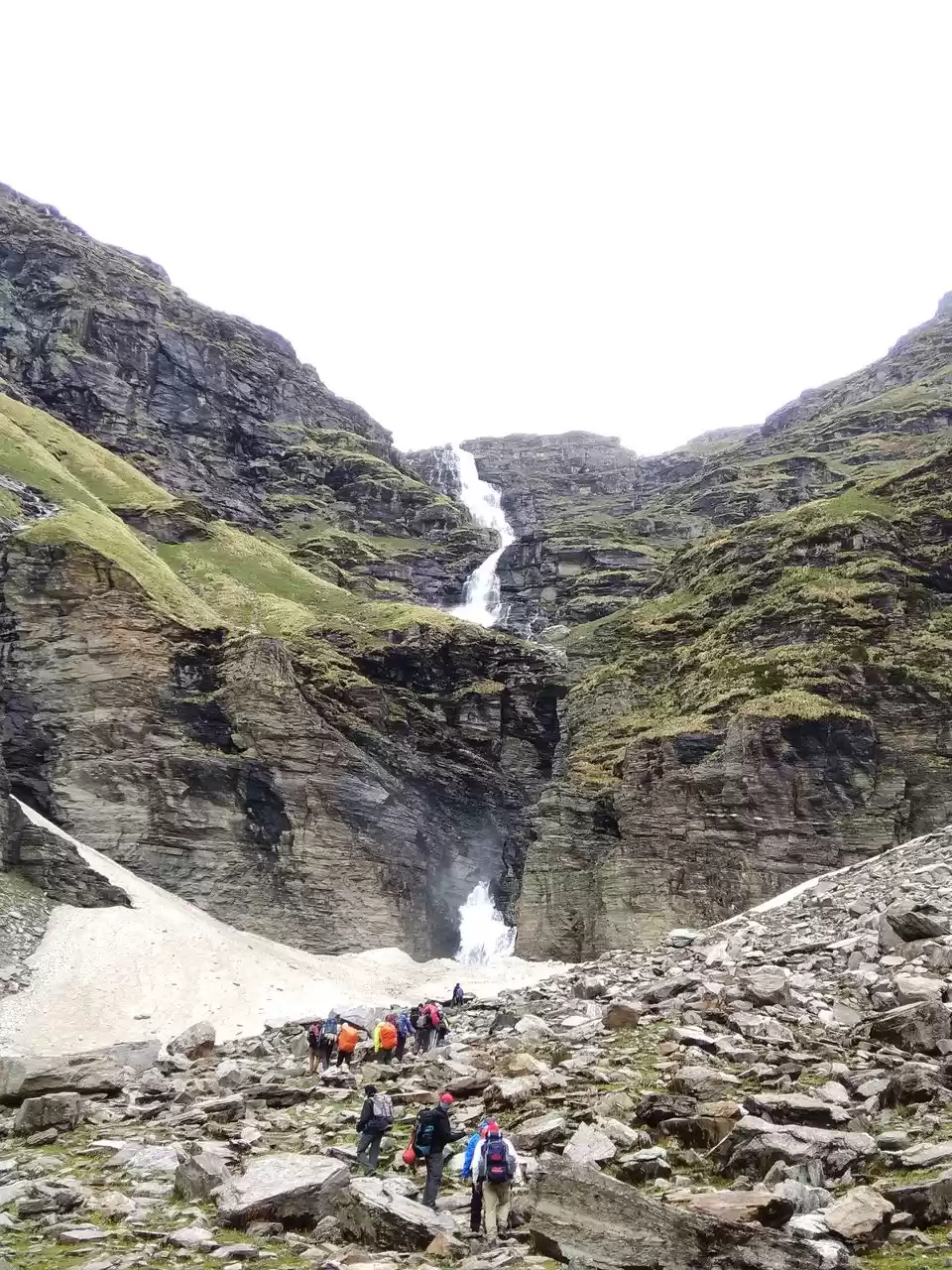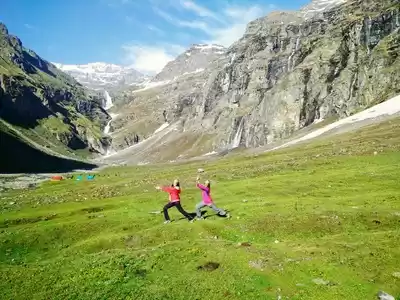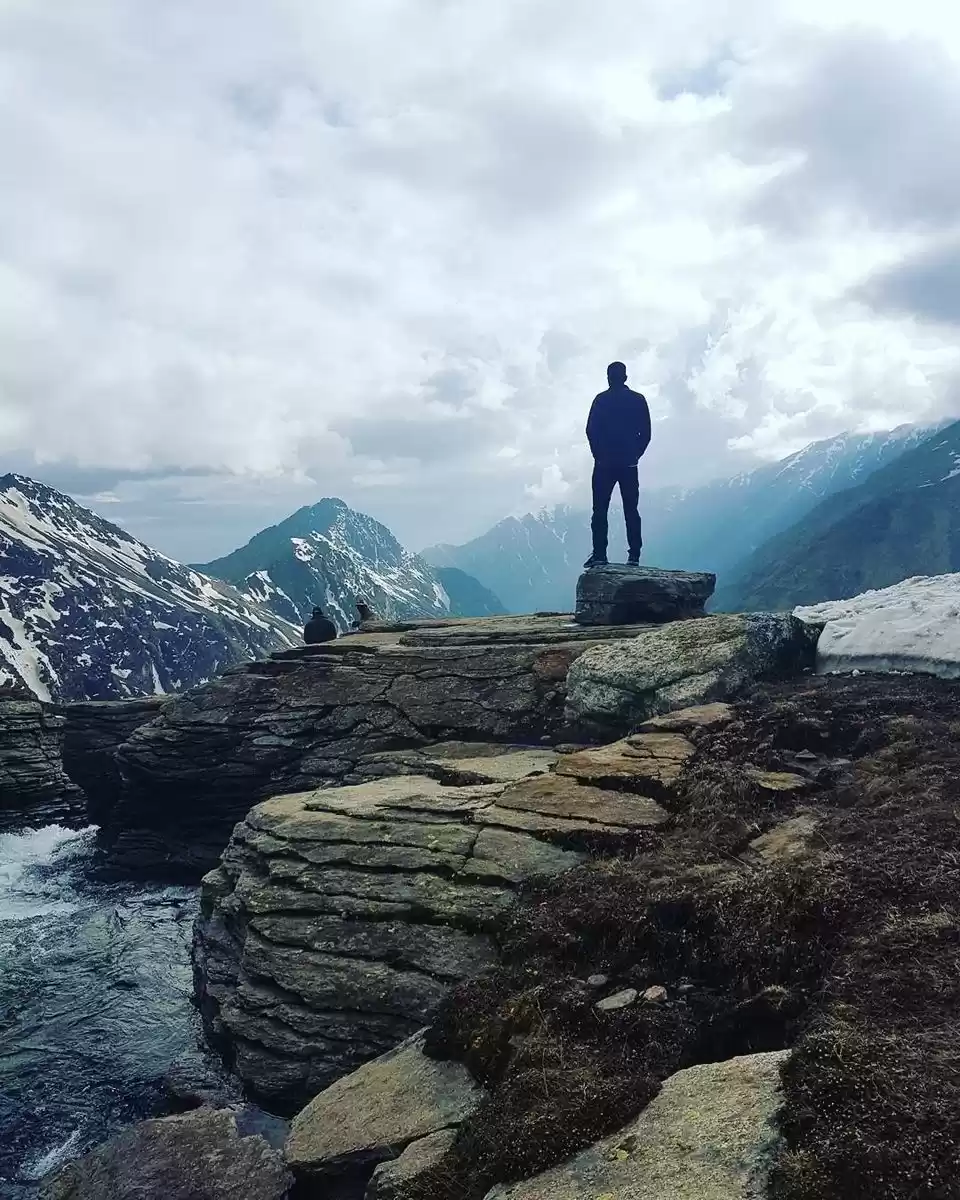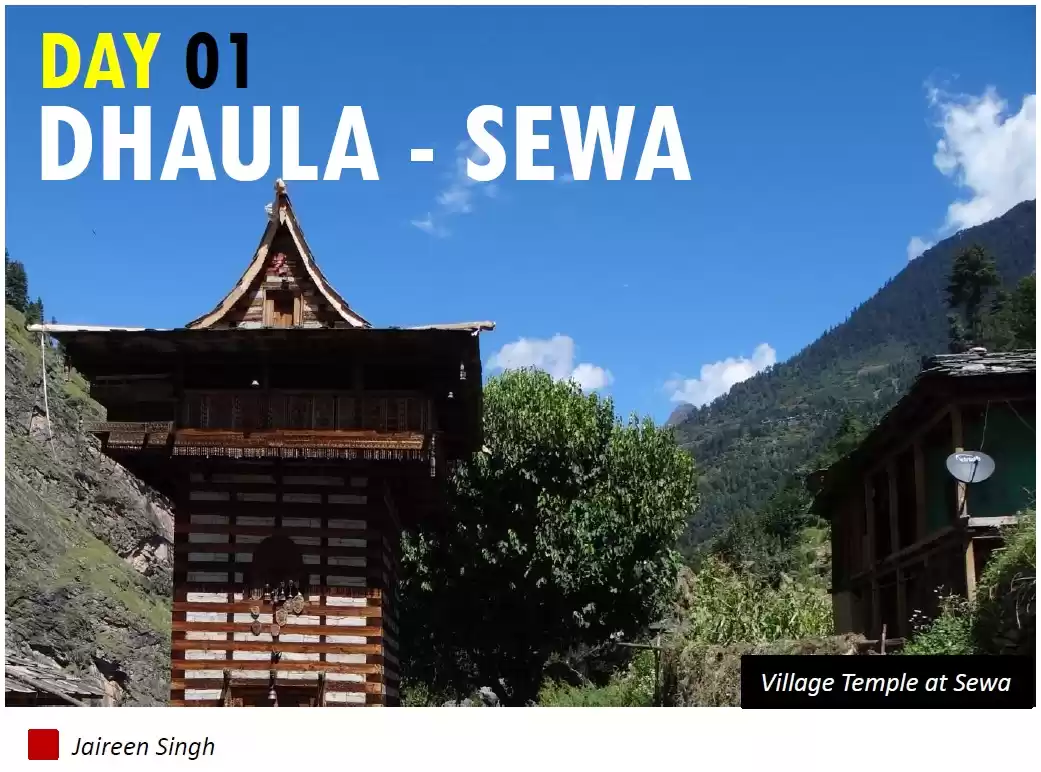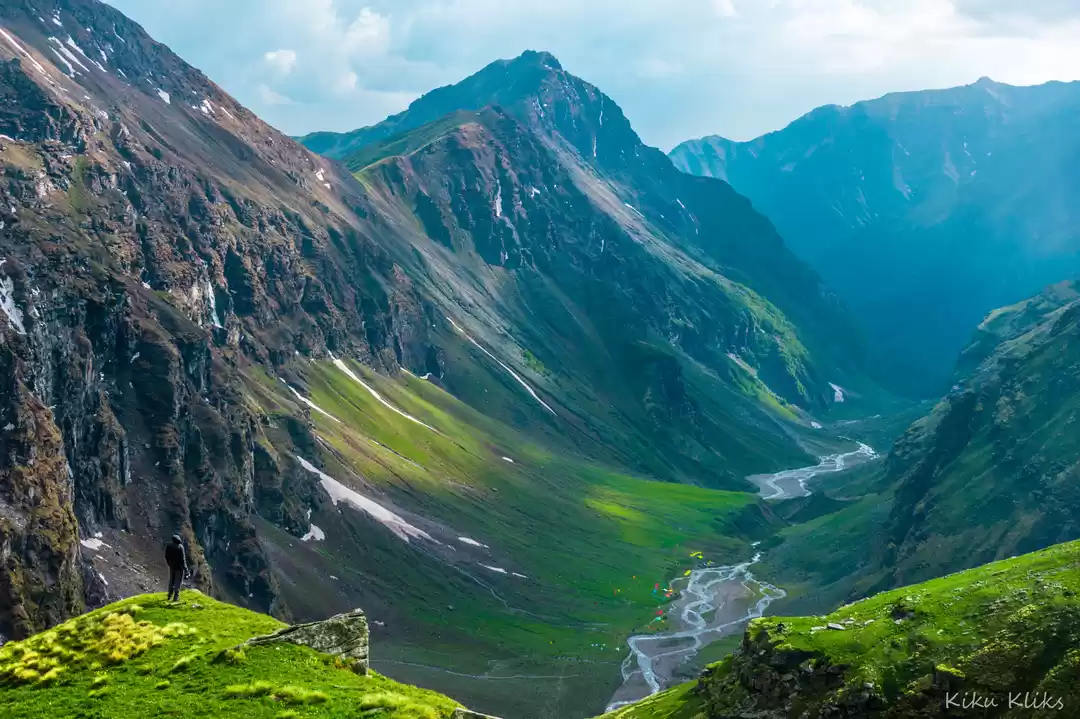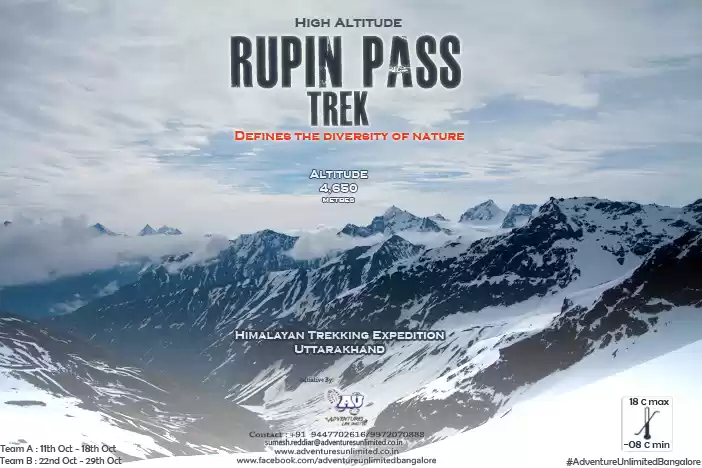Imagine yourself standing in a lush green valley sprinkled with yellow flowers, surrounded by mountains on all three sides. The mountain in front of you has a waterfall, which can put the CGI build waterfall in Baahubali to shame. If you look a little above, you will only find the moon, giving you an impression of it being the source of the waterfall.
The sky had never looked clearer; the stars had never shone so brightly, here I was, standing in Dhanderas Thatch en route to the mighty Rupin Pass. Let me start from the very beginning of this beautiful, yet a challenging trail.
Rupin is one of the tributaries of river Yamuna, and this trek is named after the river, as amongst the many scenic variables, this river is the only constant. I was doing this trek with Himalaya Trekkers, which is a trekking group based out in Kolkata. I had seven other trekkers accompanying me. The trek starts from Dhaula, which is a small village in the Uttarkashi district of Uttarakhand. To reach Dhaula, you can take a shared taxi or a traveller from Dehradun.
On the first day of the trek, we had to travel to Sewa, which is the last village of Uttarakhand. Dhaula lies at an altitude of 5100ft, whereas, Sewa lies at an altitude of 6300ft. The ascend was moderate in terms of difficulty, but the scenery kept changing with every step we took. We walked on rough terrains, climbed rocky hills and at the same time experienced the green by walking in the shade of chir and pine tree. We started from Dhaula at 7 AM and reached Sewa at about12.30PM. Sewa is a small village with some chirpy kids who like playing Cricket. The village also has a temple which is said to be made in reverence to Kunti’s first son Karna. You can see a lot of medals and trophies above the temple’s door. It is said that whenever a villager wins a medallion, he/she gifts it to the temple.
The next day, we started from Sewa at 7 AM and moved towards Jhaka, which was supposedly the last village before Rupin Pass. This, for me, was the most challenging day of the trek. We had to travel 12kms and climb from 6300ft to 8300 ft. We started by walking along the Rupin river, which was flowing in its full glory. There were Apple and Apricot trees all around us. We also crossed the bridge which demarcates the state boundary between Uttarakhand and Himachal Pradesh. The road ahead was long, and the sun showed no mercy. We took small water breaks in between as it was imperative to stay hydrated. At 3 PM we reached Jhaka. The homestay there reminded me of the house that was there in the climax scene of Welcome. It was literally on the cliff. The climb was indeed harsh, but the view from that homestay was surreal.
The third day we travelled from Jhaka to the Dhanderas Thatch or the lower waterfall which was at the height of 11,700ft. We had to travel close to 14kms that day. But when we neared the lower waterfall, we saw the first glimpses of snow. We had to cross a snow bridge to reach the other side of the Rupin river. Just before the lower waterfall, we had to make the most challenging climb of the trek so far. There was a slope of about 50-60 degrees, and the passage was so narrow, that we could barely stand on two legs. But the sense of achievement after reaching the top cannot be described in words. It was a beautiful valley with green meadows and yellow flowers. In front of us was our next target, the Upper Waterfalls. But before that, we deserved a break. The next day was a rest day.
On the fifth day of our trek, we needed to cross the waterfall lurking in front of us. When we reached closer to the base of the fall, we found out that there were small glaciers at the slope of 45 degrees in the fall. And, to reach the other side, we had to walk on that slippery slope. It was tough to get a grip on the snow, but the trek guides were really helpful. After crossing the glacier and an arduous climb following it, we reached the upper waterfall. We thought of camping there, but each one of us wanted to go further up and camp near the pass. So, we decided to camp at Rati Pheri. It is at the height of 13,420 ft. The view from our campsite was spell bounding. We could see the beautiful expanse of the white snow all around us. The mighty Rupin was now a meek stream.
The night in the campsite was extremely uncomfortable. The temperature was hovering around -5 degrees with chilly winds making your bones shiver. We woke up at 4 AM to reach our summit. The climb was undoubtedly the toughest out of all climbs that we had to face till now. We had to do an ascent of 2000 ft while covering just 1.5 km. You can imagine the slope. Firstly, it was a climb on the snowfield. We slipped, we fell, but, we never gave up. The last climb of about 200m still haunts me sometimes. It was a 70-degree gradient. The toughest thing about this climb was the fact that the rocks were very loose, so we needed to be extremely careful. With measured steps, we climbed, climbed and climbed. And here it was, The Rupin pass, we had done it. Standing at 15,380 ft, you could see nothing but snow-clad mountain ranges surrounding you from all four sides. Rupin pass had been conquered.
Then came the descent. We slid in the snow for the first 100m. After that, the path was relatively easier. We decided to camp at Sangla Kanda. This was our last campsite. The next day we got down to Sangla from where we took a bus to Shimla.
Go to Rupin pass if you want to experience the mountains like never before. Nature will play its game and will keep you guessing, changing at every turn and will throw surprises at you in the form of challenges. The challenges are tough, but once you have completed them, you will feel like the king of this world!
P.S - The cost mentioned above is from Dehradun to Shimla and it includes your Trekking fees.















